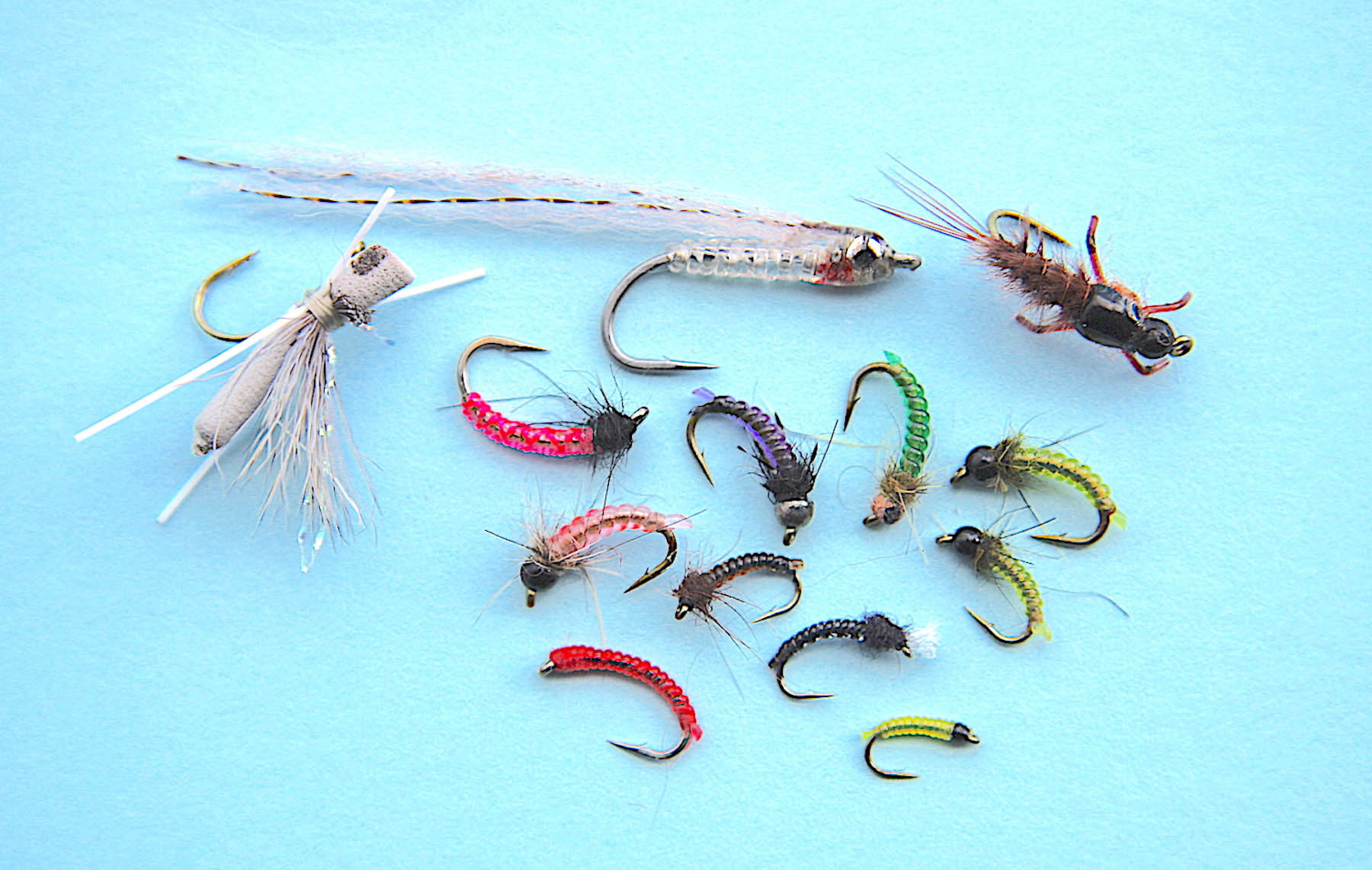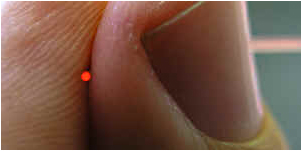Discovering stretch cord completely revolutionized the way I tie flies.
The elastic polyurethane monofilament manufactured for the bead and jewellery industry, is now the first material I reach for whenever I am trying to imitate a segmented, translucent abdomen, which happens to be fairly often.

Although flies made from Stretch Cord are virtually indestructible it is how the translucent colours reflect light under water, which makes it an outstanding fly tying material.
Pale colours such as pink, clear, yellow and lime Stretch Cord have strong fibre-optic properties. Pinch the last 1cm of a length of Stretch Cord between your thumb and forefinger and you will notice the viewed end glow.

Light entering the exposed portion is channelled through the shaded section between your thumb and forefinger to the tip. This means some light entering a Stretch Cord abdomen will move within the material before being released, and some light will be released on the shadow side, causing the fly to glow.
Deeper shades lack fibre optic properties but produce realistic abdomens with greater sparkle and translucency than those tied using substitutes such as Larva Lace, Stretch Tubing of vinyl rib.
High elasticity also allows for greater control over the shape and diameter of the abdomen than do the substitutes. Stretch cord is commonly available in a range of diameters between 0.5 and 1.0mm.
When tying nymphs with stretch cord, the dimensions of the abdomen are determined by both the thickness of the material chosen and by the tying procedure used.
Tie the material in along the shank and then over-wrap for a thicker abdomen (see Jelly Caddis), or tie it in at the hook bend (a little unconventional) and then wrap forward to produce a thinner one (see Zebra Jelly Midge).
Abdominal dimensions can be further controlled by adjusting the tension and the thickness, either when tying in along the shank (see Jelly Grub), or when wrapping forward. Consistently reducing tension while wrapping, will produce a tapered abdomen.
Uses for Stretch Cord go well beyond the wrapped abdomen. Stretch cord is easily kinked with a heated pin and makes great legs on both nymphs and terrestrials. It also happens to be my favourite material for pearlescent bellies on small minnow patterns.
Whether you use Stretch Cord to design new patterns or hot up old favourites, it is inspiring stuff to work with. Owing to the optical properties of Stretch Cord, one has little indication of how a fly in the air will light up beneath the surface (check out the in-air and underwater pictures of the Jelly Midges).
It is therefore a good idea to dangle a new pattern in a glass of water before tying up a batch for the river or lake.
Purchasing Stretch Cord
I use the term Stretch Cord to distinguish the polyurethane product from two other forms of beading elastic: spandex and latex rubber, in a fabric sheath.
Stretch Cord is widely available from stores specializing in craft supplies, beading material or jewellery findings. If your local store doesn’t stock the colours or diameters you require, try searching the internet (e.g. E-bay and Trademe).
It goes by various generic names, but searches on “elastic beading cord”, “elastic beading string” or “elastic beading wire” should get you there. When purchasing off the internet it is important to make sure you are purchasing Stretch Cord and not spandex, as many brands produce both types of beading elastic (look carefully at the photographs).
In 2009 Umpqua began marketing Stretch Cord as a fly tying product they call “Body Stretch”, so there is also a chance you could pick some up from your local fly shop (at five times the price).
The quality of some brands may vary substantially from one batch to the next, or between sections of the same spool. Good quality stretch cord should stretch to a point and sustain a fair amount of tensile pressure without giving or breaking. Poor quality stretch cord is either weak or will continue to stretch, and finally snap under little tensile pressure.
Although Stretch Cord is available in diameters ranging from 0.5 to 1.0mm one can expect the diameter to vary by as much as 20% of that indicated on the spool. I purchase mine from several sources and then re-label them according to their actual diameter.
Since Stretch Cord oxidises in air, becoming milky and losing strength over several years, it is advisable to store it in sealed plastic bags. I also recommend coating Stretch Cord abdomens with Sally Hansen's 'Hard as Nails' varnish.
Stretch Cord brands
Stretch Cord is available in a range of brand-specific colours and diameters. The following summary provides the colours and diameters of stretch cord produced by various brands. Only brands producing colours - i.e. in addition to clear and black - are listed.
Stretch Magic is manufactured by Pepperell Crafts. It is available in clear, pearl, black, ruby, violet and emerald green in both 0.5mm and 1.0mm.
Stretch thread is marketed by the Australian company Ribtex, and is available in clear, white, black, pink, yellow, red, purple and blue, in 0.5mm
Elasticity is manufactured by Beadalon. Blue, green, pink, purple, black and clear are produced in 0.5mm and black and clear in 0.8mm.
PowerCord is manufactured in India. It is available in black, clear, brown, green, two shades of blue, rose, purple, yellow and orange, in both 0.5mm and 0.8mm. The clear is also available in 1.0mm, 1.5mm and 2.0mm.
Crystal String is manufactured in China and is available in black, clear, brown, red, and two shades each of green, orange, yellow, purple, pink and blue in the following diameters: 0.6mm, 0.8mm & 1.0mm.
Crystal Tec is manufactured in China and is available in black, clear, brown, red, and two shades each of green, orange, yellow, purple, pink and blue in the following diameters: 0.5mm, 0.8mm & 1.0mm.
+ Effective Spey flies for New Zealand Trout and techniques for fishing them
+ Evolution of the Swing Minnow - A deadly Trout Spey Streamer
+ Jelly Midge
+ Jelly Bloodworm and Jelly Grub
+ Jelly Caddis
+ Jelly Leg Colly
+ Jelly Bellow Minnow
+ Jelly Crimp Nymph
+ Hot Foam Hopper
+ Hare's Mask Darter
+ Silicone Wing Cicada - Designing the Fly
+ Silicone Wing Cicada - Tying Steps
+ Gurgle Pop Minnow
+ Cutting your own Foam Cylinder
